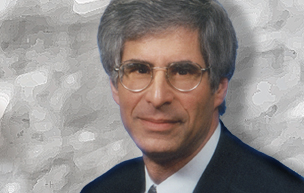As 2020 drew to a close, confirmed COVID-9 cases in the U.S. tallied about 19 million and COVID-19 deaths about 350,000, compared to approximately 82 million cases and 1.8 million deaths worldwide.
These numbers yield a disturbing statistic. The U.S., which houses roughly 4% of the world’s population, accounted for about 24% of the planet’s confirmed COVID-19 cases and 22% of its deaths. All things being equal, we should have been at roughly 4% in both categories. In other words, on a per capita basis, we have performed five to six times worse than the global average in controlling the pandemic.
To use a sports analogy, imagine a pro baseball team which, over the course of a season, commits five or six times as many errors as the league average. That team is likely to end up in the cellar and its manager and players to be looking for new jobs.
We Americans like to celebrate our technological prowess and organizational skill, so how could we have fallen so far behind the curve in responding to what was basically a technological and organizational challenge?
I won’t belabor the obvious reason — that the Trump administration was abysmally lacking in the leadership needed to set the example for, and coordinate the fight against, the pandemic.
The more disturbing reason was the extent of delusional public thinking about COVID-19 and the resultant failure of a substantial part of the population to follow basic public health advisories about the need to wear masks, social distance and avoid unnecessary public gatherings.
The list of idiotic myths that have gained currency during the pandemic is impressive: that it would disappear on its own, herd immunity would protect us, the anti-malarial drug hydroxychloroquine is a miraculous cure, masks don’t provide protection, pandemic emergency restrictions are a government plot to infringe constitutionally guaranteed liberties, the threat of COVID has been exaggerated by the healthcare industry for profit motives, the disease poses no risk to the young, and the vaccine is more dangerous than the disease.
Such irrational beliefs have led to highly irresponsible behaviors, such as densely packed crowds of unmasked people attending gatherings for everything from political events and religious observances to boisterous parties. They have also led to excessive holiday travel and family get-togethers over the July 4th, Labor Day, Thanksgiving and Christmas holidays, each followed by a predictable spike in COVID-19 cases.
The capacity for rationalization is hard-wired into the human psyche, so it shouldn’t be a big surprise that at least some people would resort to it in order to excuse their irresponsible self-indulgence. But the pervasiveness of “COVID fatigue” may be symptomatic of a larger trend noted by many scholars and commentators, namely that our country seems to have gotten crazier in the 21st century and that our collective thinking has become particularly disordered in the past four years.
Kevin Phillips, in his classic 2006 book, “American Theocracy; The Peril and Politics of Radical Religion, Oil, and Borrowed Money in the 21st Century,” offered an intriguing explanation. He attributed the increase in irrational thinking in public discourse and political decision-making to the spread of fundamentalist, evangelical religion and its growing influence on the Republican Party and government.
This strain of religious belief, according to Phillips, is marked by emotional fervor, pressure for a strong church-state relationship (theocracy), commitment to faith over reason and science, and popular anticipation of an end-of-time event such as Armageddon or Rapture.
Phillips also drew a parallel between public irrationality and America’s excessive reliance on fossil fuels.
Since the mid-20th century, the U.S. has remained by far the world’s biggest consumer of petroleum. As late as 2017, its 4% share of global population was consuming over 20% of the world’s oil and natural gas. (Interestingly this statistic parallels our disproportionate share of COVID).
But starting in the 1970s, shrinking petroleum supplies led to substantial price hikes at the pump and resulted in severe dislocations to the economy. U.S. petroleum production fell by nearly half from 1970 until 2008 (after which fracking and horizontal drilling reversed the trend). However, consumers have not been significantly deterred either by rising prices or by increasingly compelling evidence that fossil fuels are contributing to destructive climate change.
That’s because Americans love their SUVs and pickup trucks, their homes in the suburbs and exurbs, and the lure of the open road. Many have rationalized that the problems caused by the country’s petroleum addiction will magically resolve without requiring any change in their own behaviors.
Unlike climate change, the invention, distribution and administration of various vaccines will almost certainly bring COVID 19under control by the end of 2021.
My question, however, is this: What will it take to get our collective madness under control?
Send questions/comments to the editors.



Success. Please wait for the page to reload. If the page does not reload within 5 seconds, please refresh the page.
Enter your email and password to access comments.
Hi, to comment on stories you must . This profile is in addition to your subscription and website login.
Already have a commenting profile? .
Invalid username/password.
Please check your email to confirm and complete your registration.
Only subscribers are eligible to post comments. Please subscribe or login first for digital access. Here’s why.
Use the form below to reset your password. When you've submitted your account email, we will send an email with a reset code.